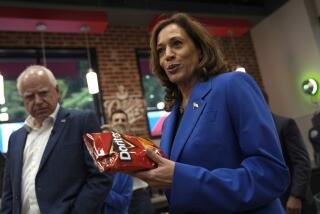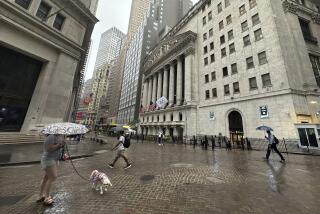A Great Party, and Now Itâs Back to Reality
The partyâs over; the era of rising stock prices that began in 1982 has ended. So whatâs ahead? A return to a time of good sense, or chastened expectations, rather than instant riches.
And if you doubt that after seeing prices rebound on Tuesday, just keep in mind that one of the biggest previous advances in stock market history occurred on Oct. 30, 1929--two days after the Great Crash.
But thereâs no need now for panic or depression. What has been lost is not five years but one year, more or less, of stock market gains. The damage is serious rather than devastating.
But the assumptions of those bull market years, based on the âfree moneyâ they provided, will now change--just as the inflationary assumptions of the 1970s about prices of houses or farms or oil rigs changed for many in the recession of 1981-82.
Back to Saving
We will now go back to earning and saving money, without assuming that strange and wonderful forces in the financial markets will magically multiply those earnings and savings.
But it will be a far better time to be a saver than a borrower. Interest rates will stay relatively high, giving savers a decent return, but pressing borrowers to the wall.
Why will borrowers now be pressed more than before? Because they no longer have a strong stock market to use as a base for leverage. After the last few days, there are not many people who still believe that stocks are stable collateral. Thus, one kind of free money is no longer there.
There were others. The market gave free money when, buoyed by a rise in stock prices, the value of pension fund assets climbed effortlessly. Companies normally must contribute part of their pretax profits to those pension funds, but the rising stock market saved them the trouble. Now they will have to go back to contributing annually, and this will make reported profit increases harder to achieve.
And the market gave free money when gains of more than 20% a year in the average stock portfolio allowed individual investors to afford sporty cars.
It has been said that greed forced the markets up, but if greed could elevate prices, weâd have an everlasting bull market. What sent the markets up was money seeking its own level, as water does.
There hasnât been much inflation in the U.S. economy or that of other major nations in the last five years; businesses have cut back more than theyâve expanded, in fact. But there has been inflation in the financial markets as money not invested in building factories pyramided stock prices from New York to Tokyo. Now that inflation is being wrung out.
Higher Premiums
Stock prices become inflated when buyers are willing to pay higher and higher premiums for the underlying profits of the company. For example, when IBM sold for $150 a share just over a week ago, it was said to be selling at 19 times its 1986 earnings per share of $7.81. Now IBM, the marketâs bellwether stock, has fallen to $115 a share, or just under 15 times 1986 earnings and 13 times what most analysts predict will be its 1987 per-share profits.
And the average price-earnings ratio for the 30 stocks in the Dow Jones industrial average has come down to 17 times earnings from 19 times before the big decline.
So, to the point: Are stocks low at this juncture? Is it a time to buy bargains? Not really. Even after the fall, stocks are selling at or above the high end of a price range that has prevailed for more than 70 years. According to investment manager Kenneth L. Fisher, in his book the âWall Street Waltz,â the most prevalent average price-earnings ratio for all stocks from 1915 to 1986 is 10 to 15 times earnings.
And that may not be the end of the story, because for most of the years those prevalent ratios were established, government bonds were not paying over 9% interest--competing with stocks for investor dollars--as they are now. To beat the return on a 9% bond, according to one of the complex yardsticks watched by Wall Street, stocks would have to sell at about half their current price/earnings ratios.
Thatâs not saying they will. Only that thereâs no reason to believe that stocks are now bargains.
But keep the real economy of products and paychecks in mind: The companies behind the stock prices, whatever their current price-earnings ratios, remain good working businesses. If theyâre not too deep in debt, which happily is the rule for the great mass of companies, theyâll be able to prosper in a sound economy.
The big question: Will we have a recession? Possibly not. We may have bankruptcies, but there is a decent chance that the U.S. economy can find steady work providing exports to Japan and Asia, where excesses are also being wrung out of financial markets, and Europe, where economic activity is picking up.
And, final cheery note, there is little reason to expect renewed inflation, which comes about when too much money chases too few goods. In the aftermath of more than $1 trillion wiped from the value of stock prices, we no longer have too much money chasing anything.
The outlook? Hard work, steady progress, but no free lunch. In other words, back to reality.
More to Read
Inside the business of entertainment
The Wide Shot brings you news, analysis and insights on everything from streaming wars to production â and what it all means for the future.
You may occasionally receive promotional content from the Los Angeles Times.










